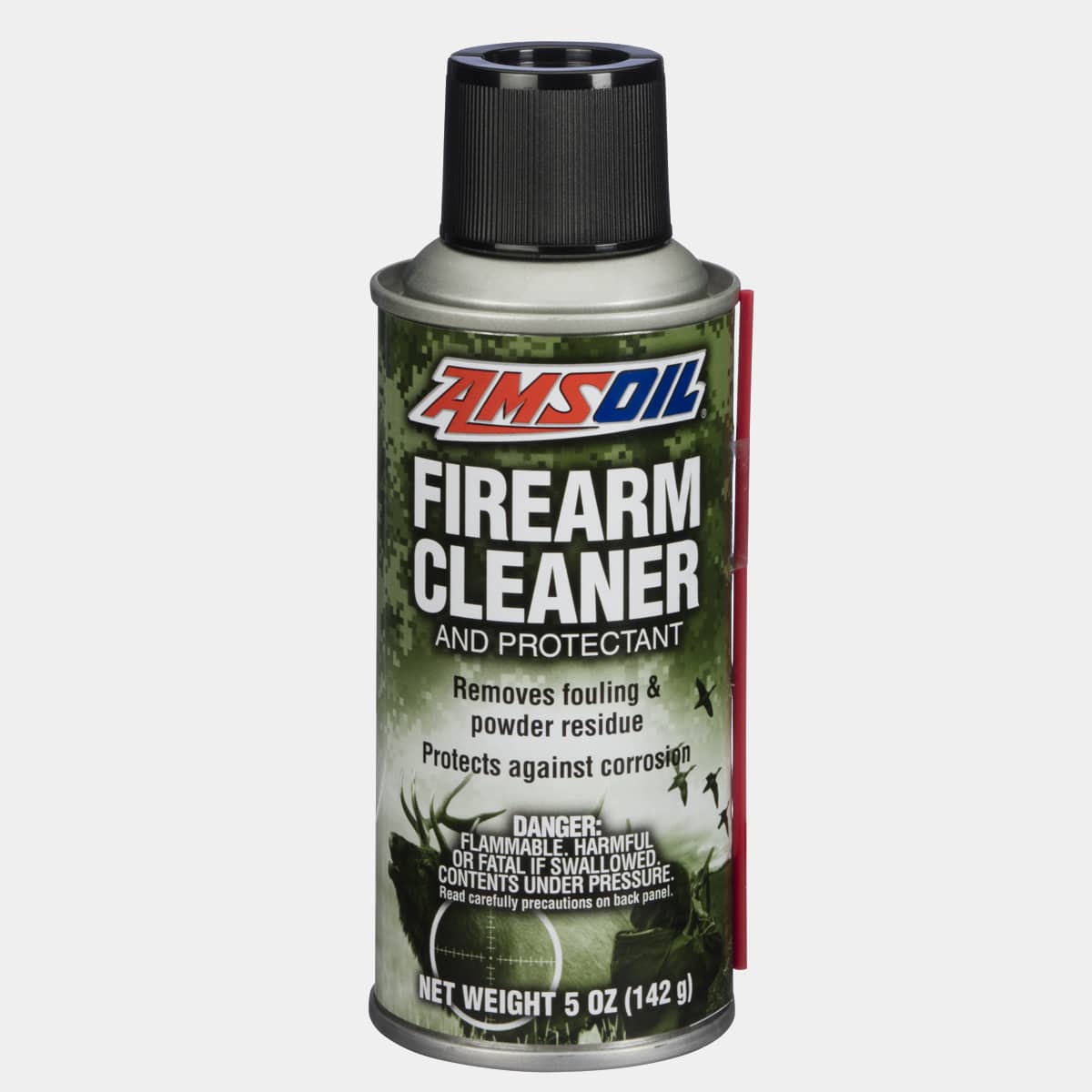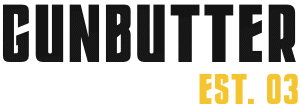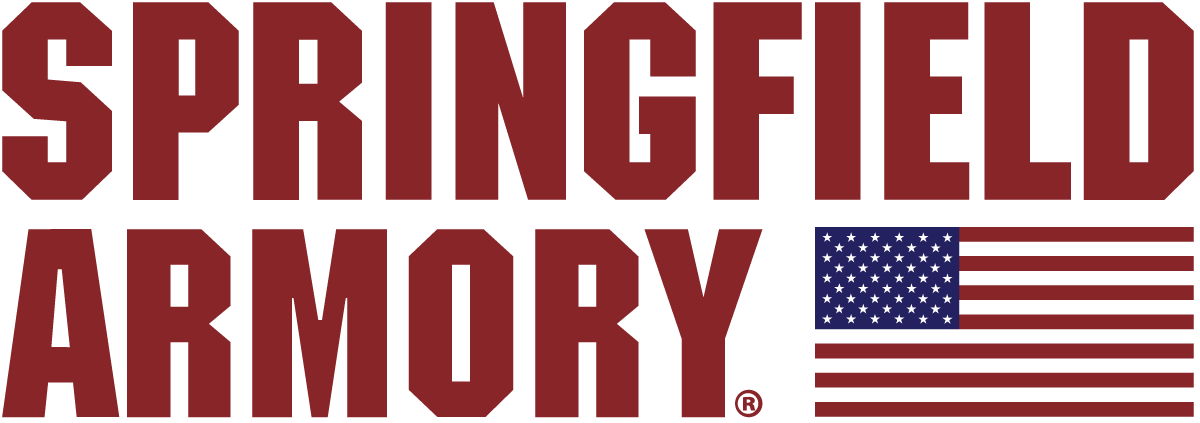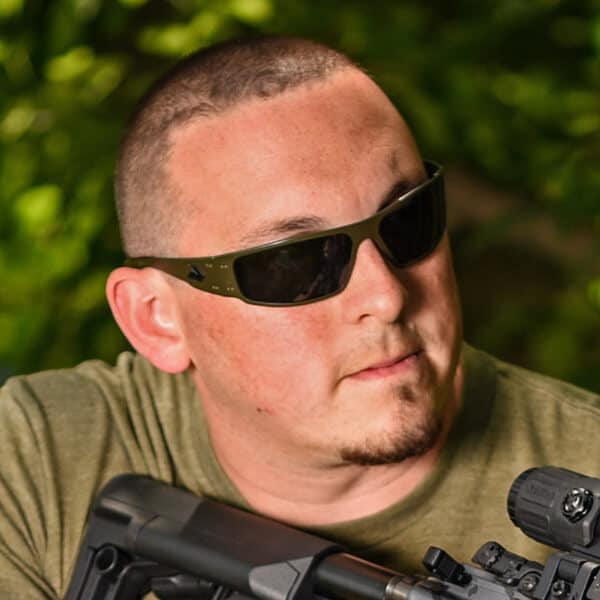How Do I Clean a Pistol?
January 4th, 2024
8 minute read
If you shoot guns at all, you know that at some point you must clean them. Personally, I despise cleaning guns, but it is necessary to the reliability and functionality of them, and it must be done.
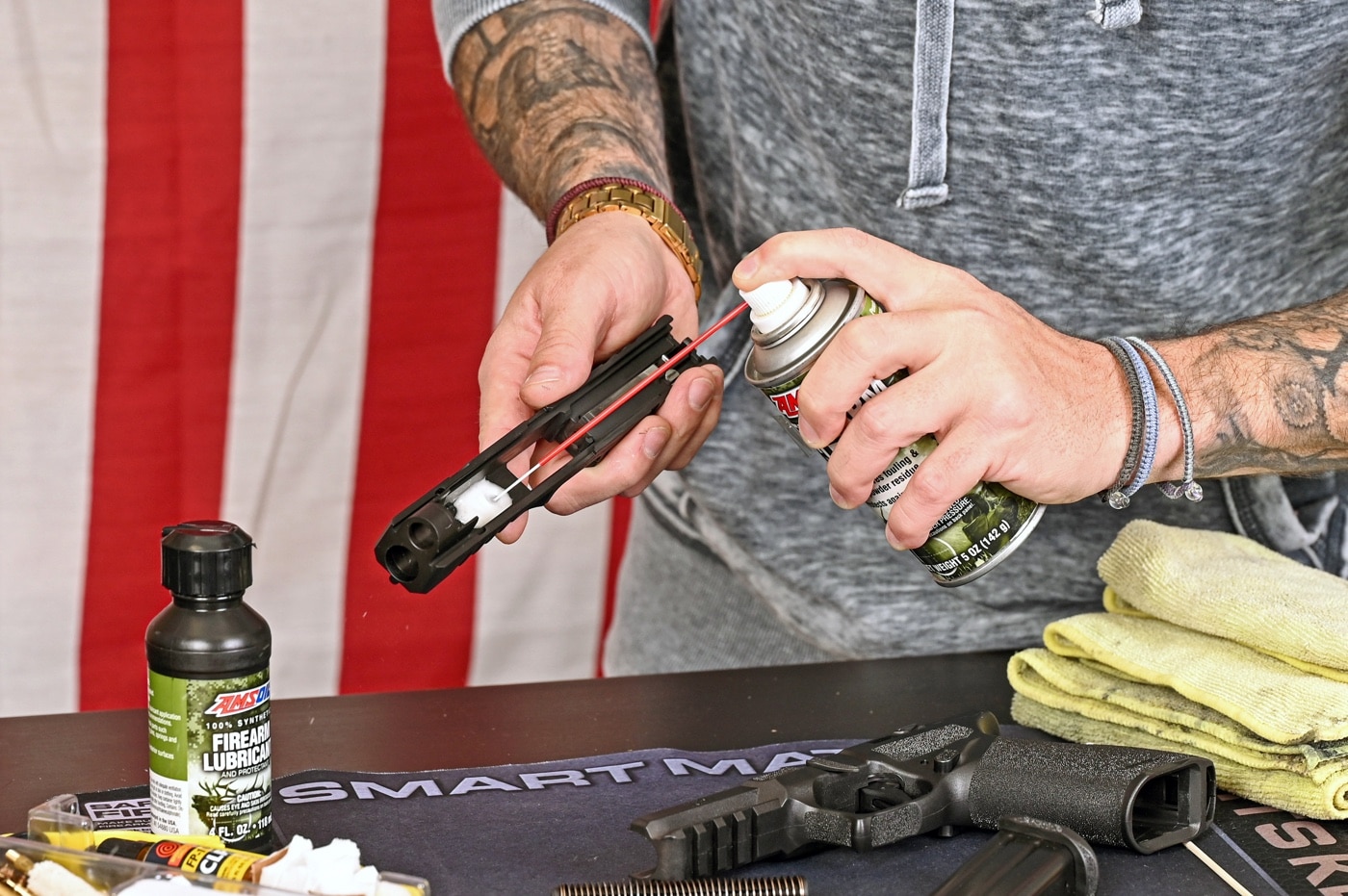
Pistols are generally very simple mechanisms that don’t require much as far as tools and solutions to keep them clean and running properly. In this article, I will walk you through my favorite methods of cleaning my pistols and a few newer tips and tricks to make life easier.
Pistol Maintenance: Safety First
The first and most important thing to remember when cleaning a pistol is safety. Always, make sure your pistol is unloaded and cleared before doing anything.
Double check by ensuring the magazine is removed and pulling the slide back while visually inspecting the chamber.
Unpopular Opinion: Read the Manual
Now, I know this might not be the most popular opinion. However, it is necessary if you do not know how to disassemble your gun. Grab that owner’s manual out the box and start reading the manufacturers disassembly procedure.
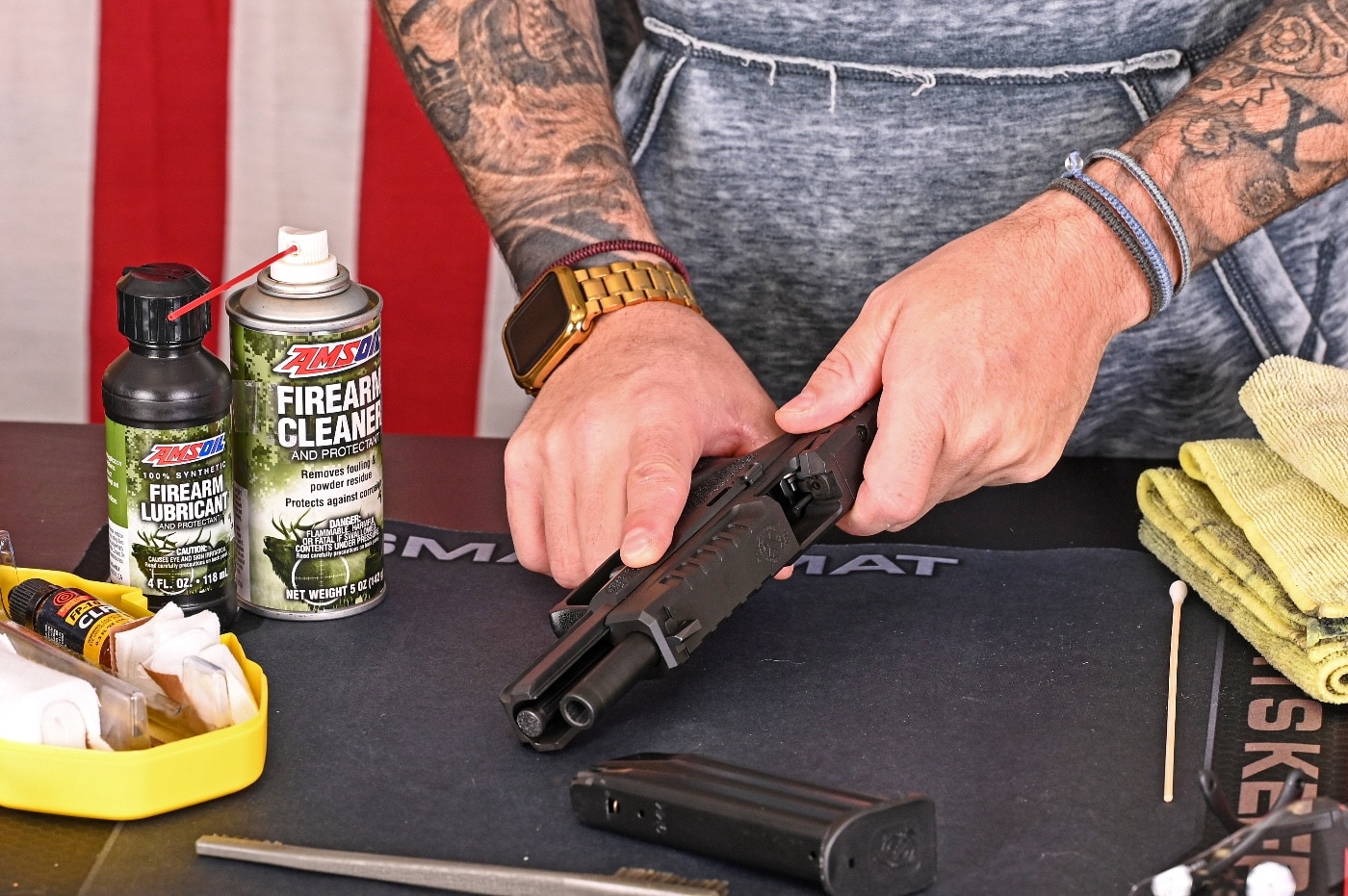
If you are cleaning a Springfield Armory handgun, the company does an excellent job of explaining the process in the owner’s manuals. You can see all of the Springfield pistol manuals here.
Your Gun Cleaning Workspace
You are going to want to find a nice place that has enough space to lay out all your parts. Your cleaning area needs to be well-ventilated as well because some of the cleaning products can be a little overwhelming in small areas.
Cleaning a gun is dirty work. Make sure the surface you are cleaning on is easily cleaned. If you clean a gun while sitting on your nice white fabric couch, it won’t be white for long.
Handgun Cleaning Supplies and Tools
Now that you’ve taken the right safety precautions to clean your gun, let’s discuss the particulars. The proper tools are a must. Without tools designed for the job you won’t be able to successfully complete the job very well.
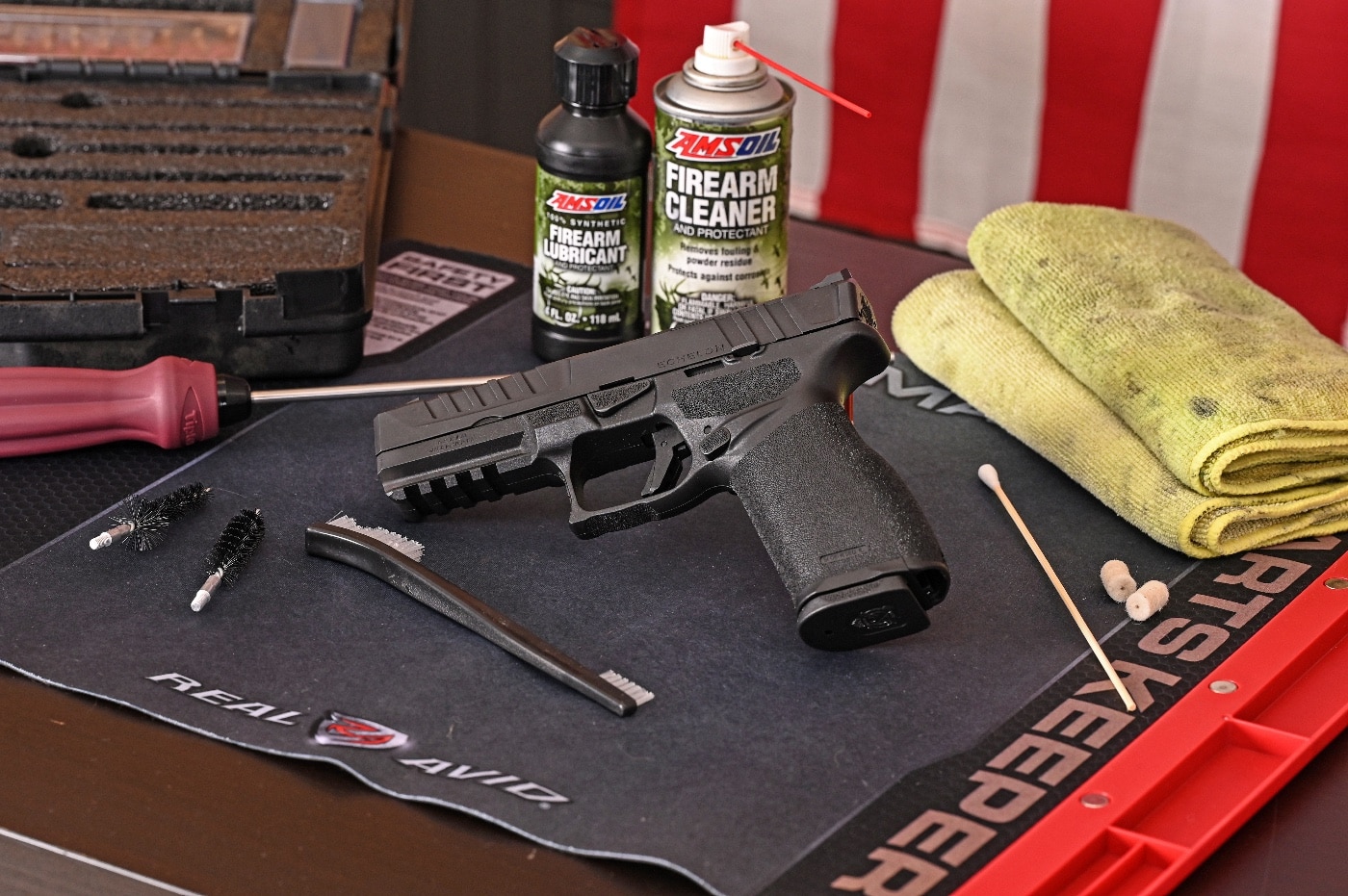
While different guns will require different techniques, here are some essential tools that could be needed to be successful during the gun cleaning process:
- cleaning rod, bore brush (caliber specific)
- cleaning swabs
- utility brushes
- cleaning patches
- microfiber towels
- bore snake
- cleaning solvent
- lubricant aka gun oil
The easiest thing to do is pick up a nice cleaning kit that will include most, if not all, of the above cleaning supplies.
I also like to have a nice rubber-backed gun mat to help protect all the gun parts and also protect the work surface.
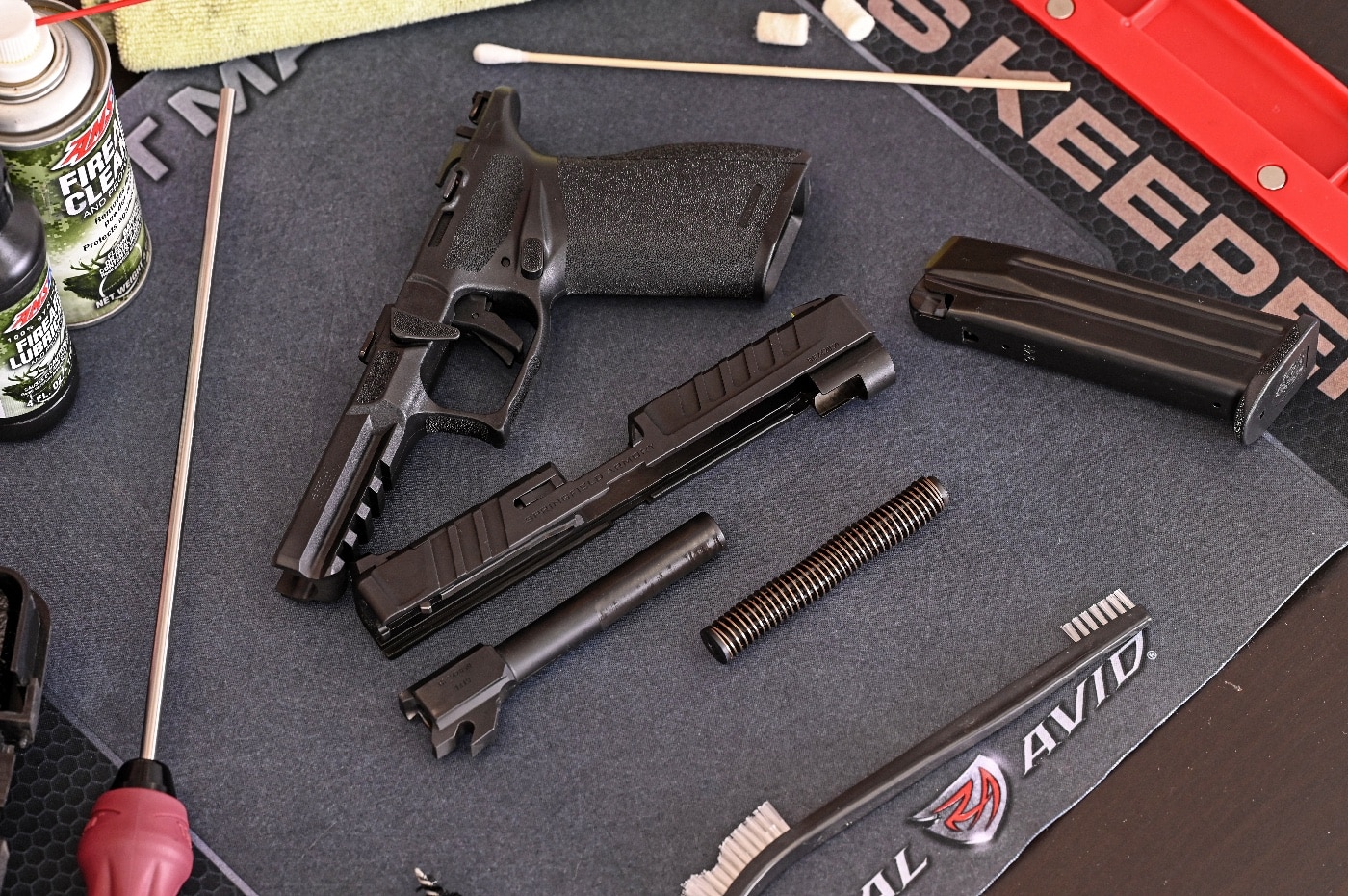
Another good idea is to have a nice pair of safety glasses to protect your eyes from flying springs, debris and chemicals.
I always wear a pair of nice nitrile gloves as well. The chemicals can be harsh on the hands and gloves will also make for easier cleanup in the long run.
Handgun Field Stripping
Now that you have your tools and cleaners all figured out it is time to get to work.
First things first, even though you already should have unloaded and verified the gun is clear of any live rounds, do it again. You can never be too safe.
Follow your gun’s instructions for field stripping.
Getting to the Dirty Business of Cleaning
The first thing I do after disassembly is go to work on the barrel and recoil spring. I am a big fan of the Amsoil brand Firearm Cleaner and Protectant, but you can use any firearms cleaning solution you want.
Start by spraying your parts down with the cleaner. Using your brushes work in all the cracks and crevices of your barrel and recoil spring.
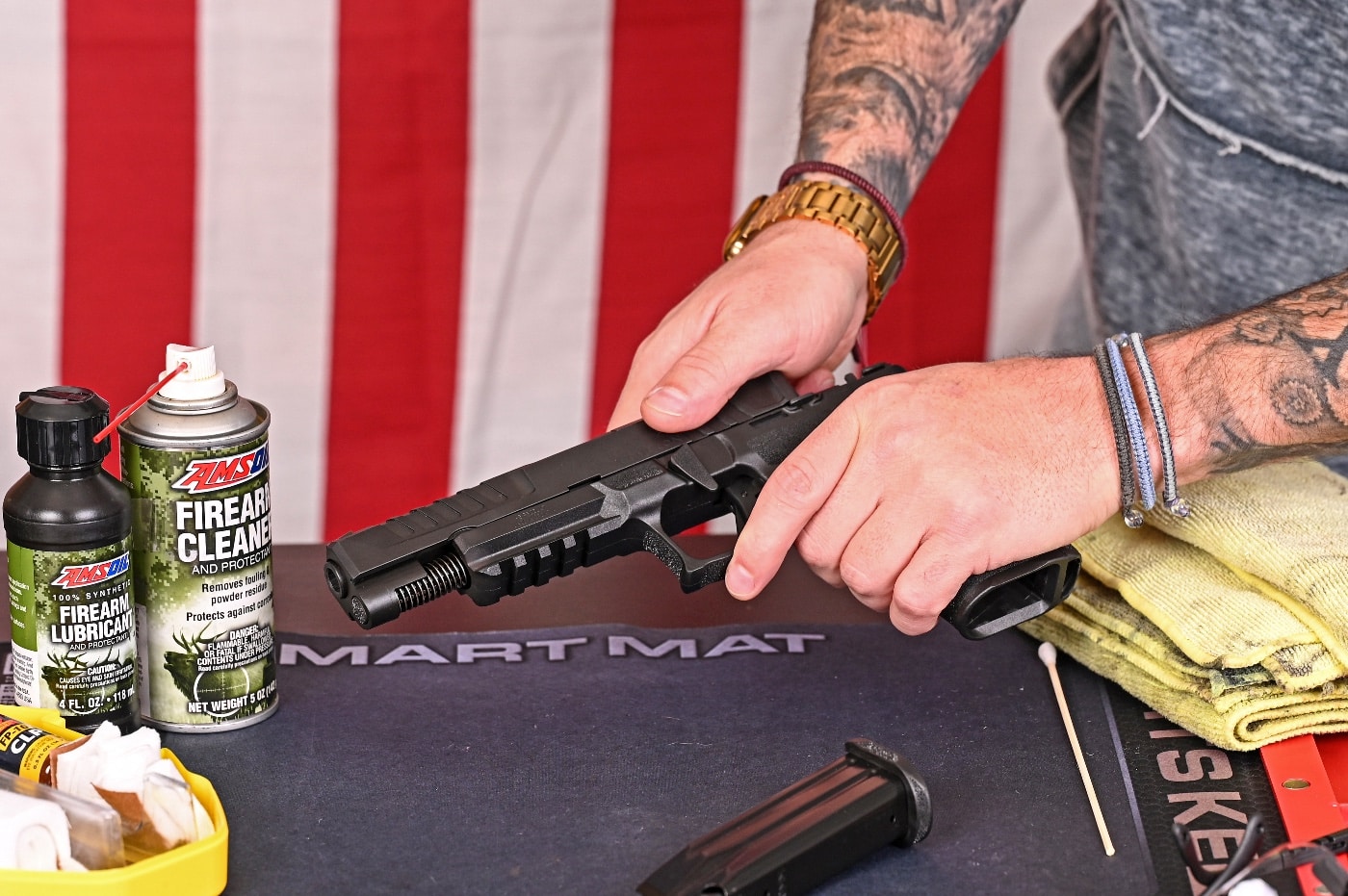
Next, take a bore brush or snake that is the proper size of your pistol’s barrel and clean inside the barrel itself. You will be able to see debris inside the barrel so clean it until you are happy.
You can use your patches to run through the barrel as well. Soak them in cleaner and run them through using your cleaning rod.
After the barrel and recoil spring are clean, it’s time to move onto the slide. If this is a pistol carried often, chances are your slide is just nasty. I know my carry guns look like Chewbacca was open carrying it in his shoulder rig for a while. I don’t even understand where the dirt and fuzz comes from honestly, but it is there and it needs to go.
I usually will blow off any loose debris with some canned air and then use the same cleaner I used on the barrel to loosen up anything left. Grab those brushes and cotton swabs and work all the edges, inside your slide serrations, around safeties, and the ejector.
For stubborn dirt and debris, allow your cleaner to soak in for a good 15 minutes or so before scrubbing.
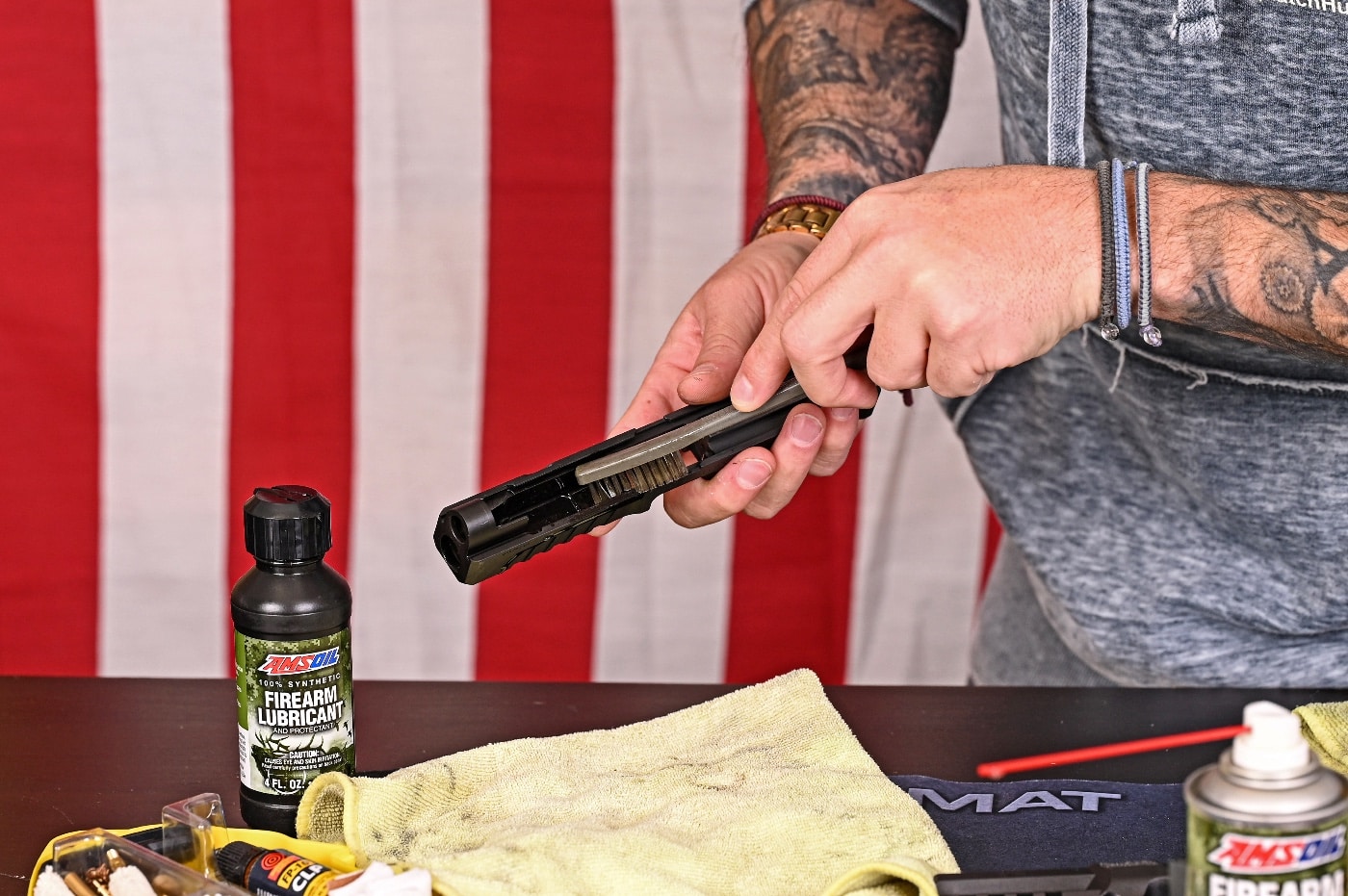
Once everything is clean, I like to wipe the slide down with a microfiber cloth and then put a little bit of lubricant on the springs and drip a drop inside the firing pin housing. Personally, I use Gun Butter as my go to lubricant. I put a thin line inside the slide rails as well as a drop or two on each spring. Gun Butter is easy to use, doesn’t make a big oily mess, and works phenomenally well.
After the slide is all cleaned and lubed, I throw my barrel and recoil spring back in it and set it aside. It’s time to tackle the frame.
Getting a Handle
The frame is often the hardest part of the cleaning process because of the size and awkward little crevices that need to be cleaned. This is where you are going to need to have a good arsenal of tools and put them to work.
I personally love double-sided nylon brushes for the frame. The smaller the better in my opinion because then I can clean all those hard-to-reach areas. Clean it, wipe it down with a microfiber cloth and then touch up any areas you may have missed.
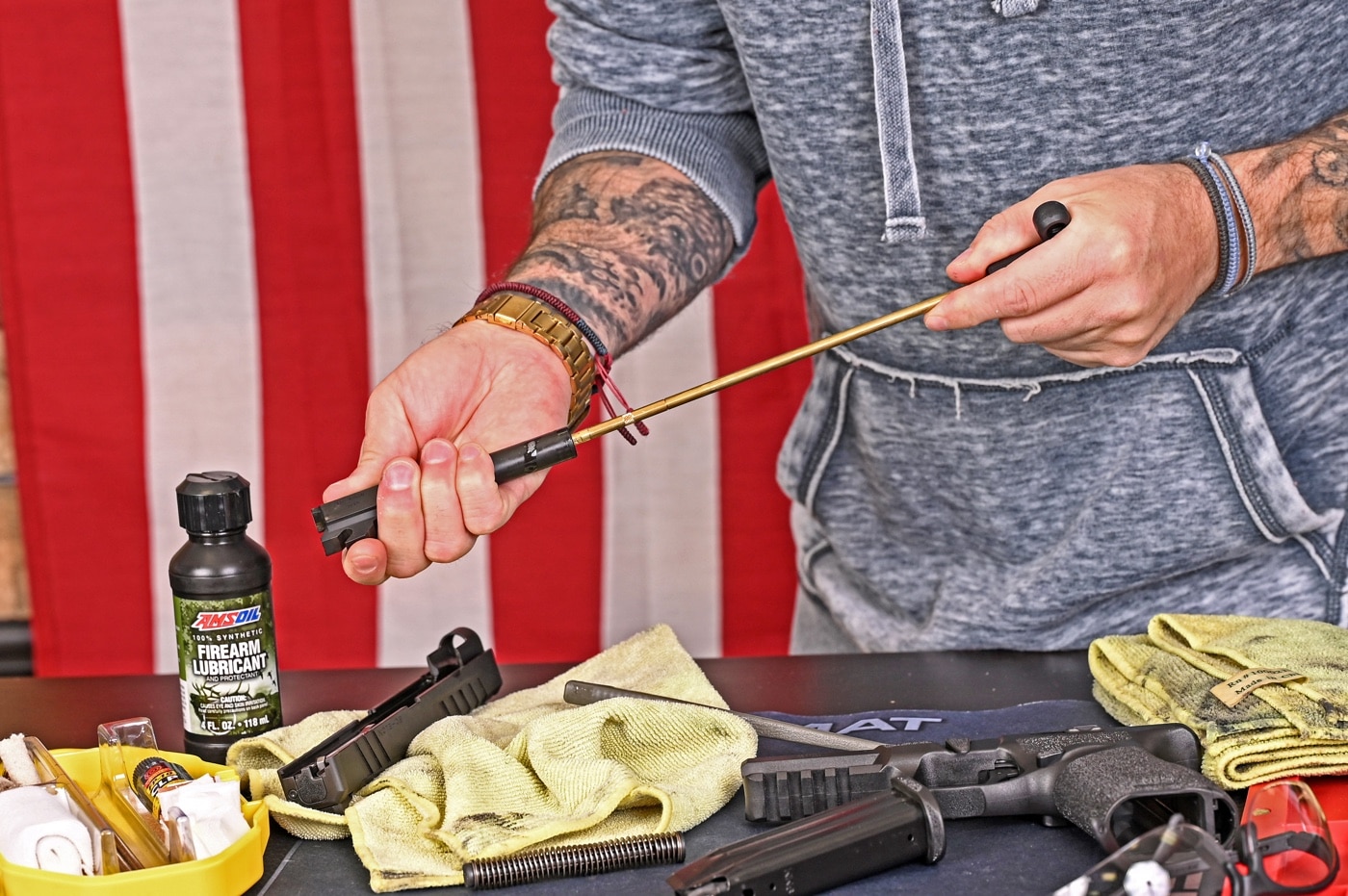
After cleaning the frame well using your cleaner, lube the springs and slide rails like you did on the slide.
One area of a pistol most people end up forgetting about when it comes to cleaning is the magazines. The magazines get very dirty inside and outside and can cause a malfunction in feeding during live fire. Reliable, clean magazines are critical to the operation of a semiautomatic pistol so make sure you disassemble, clean, and reassemble according to the manufacturer’s instructions.
Special-purpose brushes are available for magazine cleaning, but personally, I just take them apart and clean them with the same tools and brushes I used on the rest of the pistol. Use caution when disassembling your magazines because the springs are compressed very tightly at times and can hurt. Use safety glasses and extra care when working with magazines.
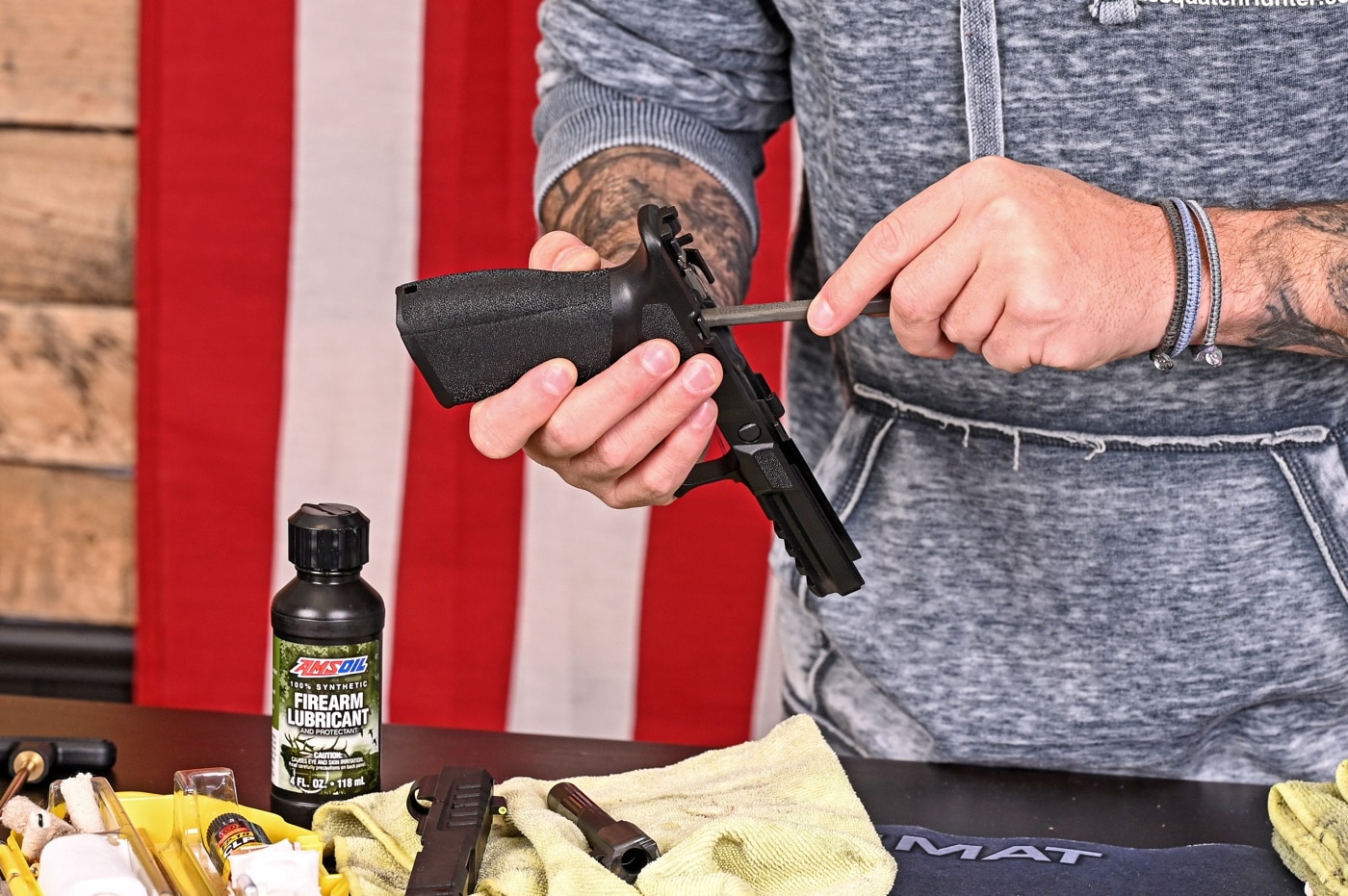
Clean them, but do not lubricate your magazines because the lubricant can cause more harm than good and cause the magazine’s followers to get gummed up with residue, causing feeding problems in your gun. You also do not want any cleaners or oils near your ammo’s primers.
Putting It All Together
After everything is cleaned and lubricated, you then reassemble everything. Reassembly will also be covered in your manual but is normally the reverse of disassembly.
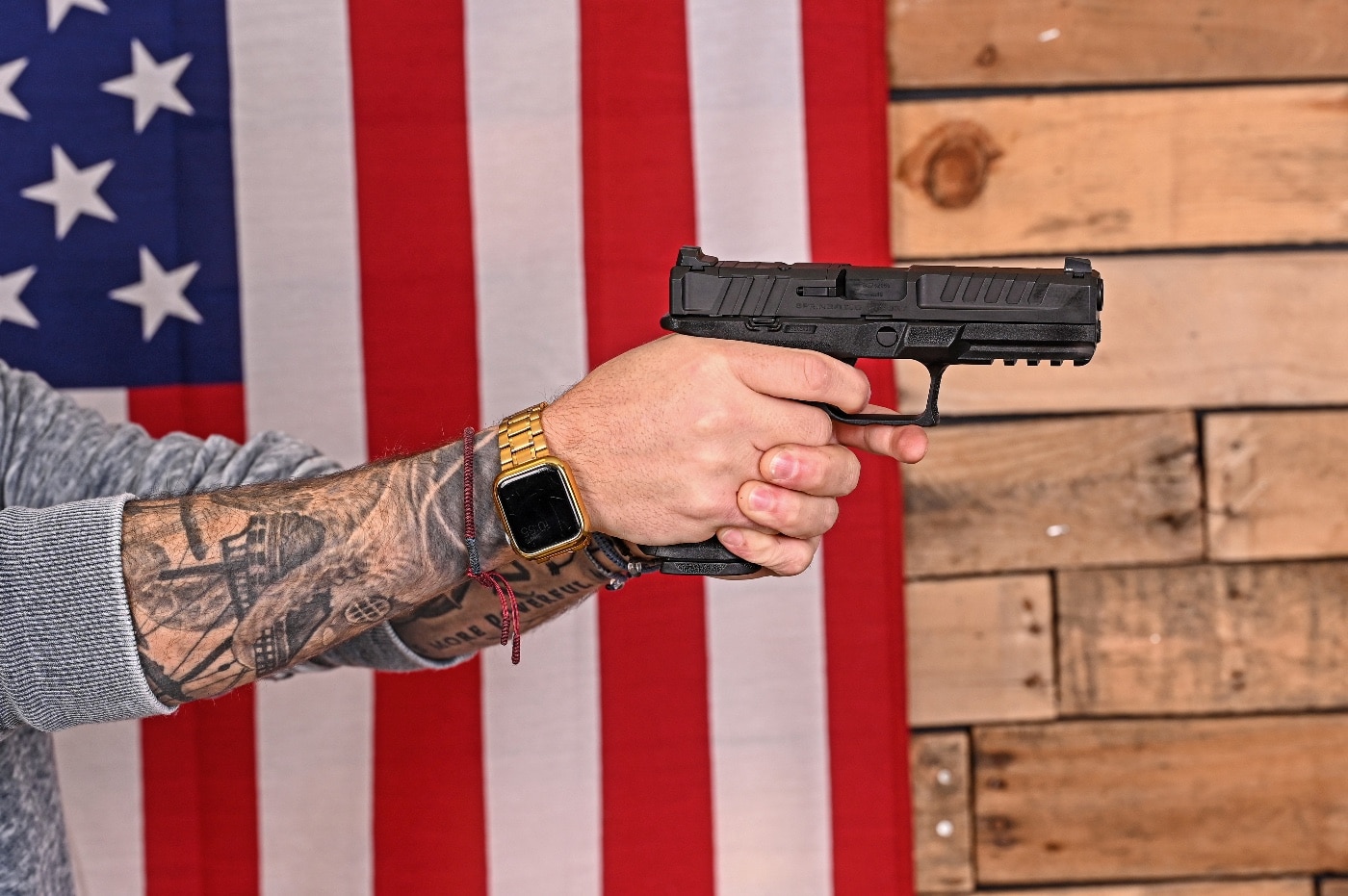
After you get the gun back together, it’s imperative you test functionality. Make sure you check the proper functioning of the trigger, safety, slide operation, and magazine retention and removal. You never know what you might have accidentally bumped out of place during cleaning, so it is very important to safely check everything.
Once the inside of the gun and its parts are clean, shiny and lubricated, it’s time to clean the exterior of your pistol. A clean microfiber cloth is perfect for this job. A good microfiber cloth will not leave any fuzzies and will absorb excess oil while leaving the surface clean with a nice little shine. I will spray the exterior lightly with my cleaner and then rub it clean with the cloth.
Final Thoughts: Clean Your Gun
This method of cleaning is a suggestion, and many people have lots of different methods of cleaning guns. In my opinion, there is no absolute right or wrong way to do it. If the end result is a clean and lubricated gun, you did it right as far as I’m concerned.
As I mentioned before, I hate cleaning guns, but it has to be done. Setting yourself up for success is going to make the job much more enjoyable and makes it go fast.
Editor’s Note: Please be sure to check out The Armory Life Forum, where you can comment about our daily articles, as well as just talk guns and gear. Click the “Go To Forum Thread” link below to jump in and discuss this article and much more!
Join the Discussion
Featured in this article
Continue Reading
Did you enjoy this article?

 117
117




